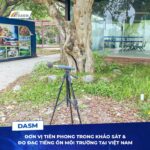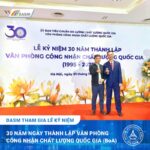1. Scope
1.1 This part of ISO 10534 specifies a method for the determination of the sound absorption coefficient, reflection factor and surface impedance or surface admittance of materials and objects. The values are determined for normal sound incidence by evaluation of the standing wave pattern of a plane wave in a tube, which is generated by the superposition of an incident sinusoidal plane wave with the plane wave reflected from the test object.
This method can be used for the determination of the sound absorption coefficient of sound absorbers for normal sound incidence. It can further be used for the determination of the acoustical surface impedance or surface admittance of sound-absorbing materials. It is well suited for parameter studies and for the design of sound absorbers, because only small samples of the absorber material are needed.
1.2 There are some characteristic differences between this method and the measurement of sound absorption in a reverberation room (see ISO 354).
The impedance tube method can be used for the determination of the reflection factor and also the impedance or admittance. The sound is incident normally on the object surface. The reverberation room method will (under idealized conditions) determine the sound absorption coefficient for random sound incidence.
The impedance tube method relies on the existence of a plane incident sound wave and gives exact values under this condition (measuring and mounting errors excluded). The evaluation of the sound absorption coefficient in a reverberation room is based on a number of simplifying and approximate assumptions concerning the sound field and the size of the absorber. Sound absorption coefficients exceeding the value 1 are therefore sometimes obtained.
The impedance tube method requires samples of the test object which are the size of the cross-sectional area of the impedance tube. The reverberation room method requires test objects which are rather large and can also be applied to test objects with pronounced structures in the lateral and/or normal directions. Measurements with such objects in the impedance tube must be interpreted with care (see 9.1).
For the computational transformation of the test results from the impedance tube method (normal incidence) to the situation of diffuse sound incidence, see annex D.
1.3 This part of ISO 10534 gives preference to numerical methods of evaluation instead of graphical methods, because computers which can perform these computations are assumed to be available. Some of the quantities in the formulae are complex. The arguments of trigonometric functions are in radians.
2. Normative references
The following standards contain provisions which, through reference in this text, constitute provisions of this part of ISO 10534. At the time of publication, the editions indicated were valid. All standards are subject to revision, and parties to agreements based on this part of ISO 10534 are encouraged to investigate the possibility of applying the most recent editions of the standards indicated below. Members of IEC and ISO maintain registers of currently valid International Standards.
ISO 266:—1), Acoustics — Preferred frequencies.
ISO 354:1985, Acoustics — Measurement of sound absorption in a reverberation room.









